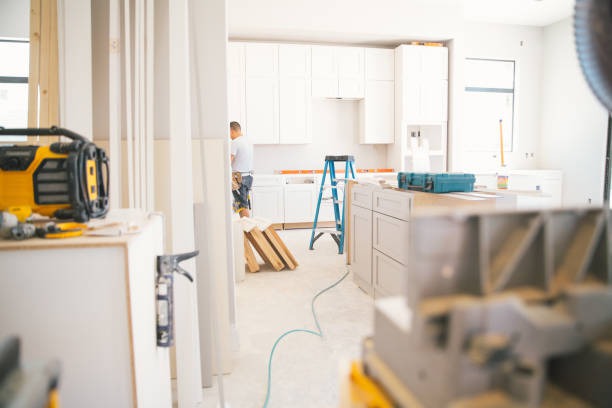Building a home is an exciting journey filled with dreams, plans, and, occasionally, a few bumps in the road. Whether you’re starting from scratch or renovating an old structure, understanding common delays in home construction is crucial to keeping your project on track. Let’s look into why these delays occur and how you can proactively prevent them.
1. Weather Woes: Nature’s Unpredictable Role
Weather is one of the most common culprits in construction delays. Rain, snow, and extreme temperatures can halt work, especially in certain climates. Unfortunately, nature doesn’t always cooperate with your timelines. To mitigate weather-related delays:
Plan your project during seasons with predictable weather.
Have contingencies for harsh weather days.
Invest in weather-resistant materials if possible.
2. Permits and Paperwork: The Red Tape Challenge
Getting all the necessary permits can be a time-consuming process. Local government offices may have backlogs or require multiple approvals, slowing down your progress. To streamline this process:
Research the permits needed for your project well in advance.
Consult with experts who know the local regulations.
Stay in regular contact with the relevant authorities.
3. Supply Chain and Material Delays
In the world of construction, timing is literally everything. Material shortages or transportation hiccups can delay the start or continuation of a project. To avoid this hurdle:
Order materials early and confirm delivery schedules.
Build relationships with reliable suppliers.
Have alternative suppliers in mind as backups.
4. Contractor Availability and Coordination
Contractor availability can be a significant issue, especially during peak construction seasons. Delays can also occur when different teams need to work in a specific sequence. Here’s how you can stay ahead:
Schedule contractors well in advance of the project start date.
Have flexible timelines but manage expectations clearly.
Ensure clear communication between all parties involved.
5. Budget Constraints and Financial Delays
Running out of money can bring your project to a standstill. It’s crucial to have a comprehensive budget that includes a contingency fund. Here’s how to manage your finances:
Create a detailed budget with all potential expenses.
Consult financial advisors for guidance.
Regularly review your budget and adjust as needed.
6. Design Changes: Keeping Vision Consistent
Mid-project design changes can lead to significant delays as they may require re-approvals and new materials. To minimize these disruptions:
Finalize your design before breaking ground.
Work closely with architects to ensure designs are feasible.
Limit changes to those that are absolutely necessary.
7. Inspections: Ensuring Compliance
Regular inspections are necessary to ensure that the construction is up to code. However, they can be a source of delays, especially if issues are found. To ensure smooth inspections:
Hire knowledgeable professionals like professional home builders who understand local codes.
Be prepared for and schedule inspections in advance.
Address any identified issues promptly to avoid re-inspections.
8. Labor Shortages and Skilled Workforce
Finding qualified workers can be a hurdle in some regions. Labor shortages can slow progress and affect quality. Consider these strategies:
Engage with home builders in Enfield & Elmsdale, Nova Scotia, who might have established teams.
Offer attractive wages or incentives to retain skilled workers.
Invest in training programs for workers to ensure high-quality output.
9. Clear Communication and Project Management
Effective communication is key to any successful project. Miscommunication can lead to errors, wasted materials, and delays. To foster clear dialogue:
Use project management tools to track progress and assign tasks.
Keep all stakeholders informed about updates and changes.
Regularly hold meetings to review progress and resolve issues.
10. Choosing the Right Team
Select a construction team with a proven track record to ensure quality and timely completion. Working with trusted home builders in Annapolis Valley can minimize the risk of unnecessary delays. To find the right team:
Research potential builders and read reviews.
Interview multiple firms to find a good fit.
Clearly define your expectations and project timelines from the start.
11. Site Preparation and Unexpected Issues
Issues beneath the surface, like unstable soil or hidden debris, can delay construction if not properly addressed. To reduce such risks:
Conduct thorough site assessments before starting construction.
Use professional services to evaluate and prepare the land.
Have a plan to address and rectify any unexpected issues that arise quickly.
By anticipating these common delays and preparing accordingly, you can keep your home construction project on track and move into your dream home sooner.
12. Technology and Tool Failures
Reliance on technology and tools is crucial in modern construction. Malfunctions or breakdowns can lead to significant setbacks. To prevent delays:
Regularly maintain and inspect all equipment.
Keep backup tools on hand in case of failure.
Train the team on troubleshooting and quick fixes.
By staying prepared, you can minimize tool-related disruptions and maintain project momentum.
Final Thoughts
Delays can be frustrating but often manageable in the journey of home construction. Recognizing potential stumbling blocks and being proactive can help you build your dream home smoothly and efficiently. With the right planning, team, and communication, your project can reach completion on time, transforming your vision into reality.

